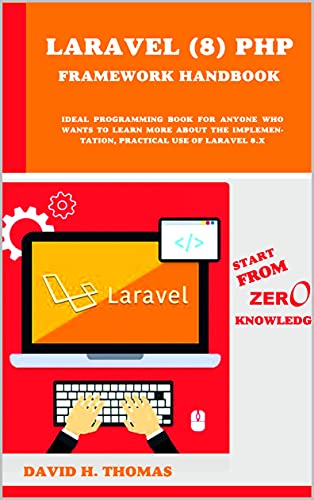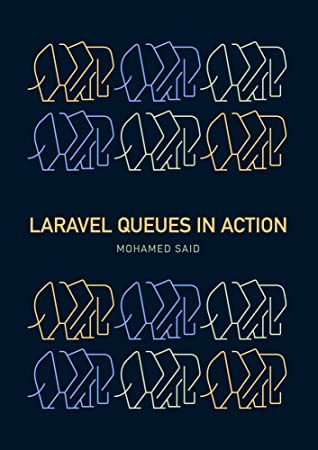Relativity: The Special and the General Theory, The Masterpiece Science Edition, by Albert Einstein , Roger Penrose ,Robert Geroch, David C. Cassidy is a PDF book for free download.
Robert Geroch builds on Einstein's work with commentary that addresses the ideas at the heart of the theory, bringing a modern understanding of relativity to the text.
He elucidates how special relativity is a reconciliation of the contradictions between the nature of light and the principle of relativity; he expands on Einstein's treatment of the geometry of space-time and the fundamental notion of an "event"; he explains in detail, but without technical language, the equivalence of inertial and gravitational mass, a cornerstone of general relativity.
From the Back Cover
What could be better than an introduction to the theory of relativity by Albert Einstein himself? One that combines Einstein's original text, written for the layperson nearly a century ago, with insights from today's leading experts.
Einstein shattered common-sense notions of space and time with the publication of his special theory of relativity in 1905. In the general theory of relativity, published in 1916, he extended the special theory to include gravity, supplanting Newton's law of universal gravitation, the zenith of the Scientific Revolution.
In Relativity: The Special and General Theory, Einstein took his revolutionary theory directly to the people. In simple terms, he carefully laid out the basic concepts of relativity. But almost ninety years have passed since Einstein penned this classic; many advances have been made in our understanding of relativity and space and time.
Robert Geroch, one of the world's preeminent experts on relativity, builds on Einstein's work with commentary that addresses the ideas at the heart of the theory, bringing a modern understanding of relativity to the text.
He elucidates how special relativity is a reconciliation of the contradictions between the nature of light and the principle of relativity (a long-standing tenet of physics known since Galileo's time); he expands on Einstein's treatment of the geometry of space-time and the fundamental notion of an "event"; he explains in detail, but without technical language, the equivalence of inertial and gravitational mass, a cornerstone of general relativity.
Roger Penrose's eloquent introduction frames the creation of both the special and the general theories in the history of science. He argues that even without Einstein, the special theory would have been formulated, as its essential ideas had been put forward before 1905. But the general theory, he shows, is so unique and revolutionary that, without Einstein, we still may not have it today.
He also discusses important developments in general relativity since Einstein's death, and the significance of the theory from the vantage point of contemporary science.
David C. Cassidy explores the impact of relativity outside of physics. In a century of unprecedented scientific advances, yet one of great turmoil, violence, and disillusionment, relativity became a tool of ideologies.
Cassidy shows that while the theory reinforced the idea of scientific progress for some, the counterintuitive nature of the theory alienated many nonscientists, opening a rift between science and the public that continues to grow today.
Fully updated 100 years after Einstein published his first papers on relativity, this classic account by the man himself is now ready for twenty-first century readers.
"It is remarkable that Einstein should have produced such an account for the lay public so soon after his general theory was completed. This view has now superbly survived the tests of time....
In this new edition we are fortunate in having the advantage of an excellent exposition of Einstein's foundational ideas on relativity from a more modern perspective in Robert Geroch's commentary."
–From the Introduction by Roger Penrose, author of The Emperor's New Mind and The Road To Reality.
"One good way to get a feeling for what relativity theory is all about is to read, in these pages, what the originator of the subject had to say. I have provided comments, attached to various sections of Einstein's book. The key to understanding relativity is to think about it for yourself."
–From the Commentary by Robert Geroch, Professor of Physics, University of Chicago.
"Relativity was a highly technical new theory that gave new meanings to familiar concepts and even to the nature of theory itself.
The general public looked upon relativity as indicative of the seemingly incomprehensible modern era, educated non-scientists despaired of ever understanding what Einstein had done, and political ideologues used the new theory to exploit public fears and anxieties–all of which opened a rift between science and the broader culture that continues to expand today."
–From the Historical Essay by David C. Cassidy, author of J. Robert Oppenheimer and the American Century, and Einstein and Our World.
"All religions, arts and sciences are branches of the same tree. All these aspirations are directed toward ennobling man's life, lifting it from the sphere of mere physical existence and leading the individual toward freedom."
About the Author
Robert Geroch is Professor of Physics at the University of Chicago. He received his Ph.D. at Princeton University, and has held positions at the University of London, Syracuse University, and the University of Texas. He is the author of General Relativity From A to B.
Roger Penrose is Emeritus Rouse Ball Professor of Mathematics at Oxford University. He is the author of a number of books, including The Emperor's New Mind, The Nature of Space and Time (with Stephen Hawking), and The Road to Reality.
David C. Cassidy is a Professor in the Natural Science Program at Hofstra University. He served as Associate Editor of The Collected Papers of Albert Einstein, and is the author of Einstein and Our World, Uncertainty: The Life and Science of Werner Heisenberg, and J. Robert Oppenheimer and the American Century.
CONTENTS:
PART I
THE SPECIAL THEORY OF RELATIVITY
1. Physical Meaning of Geometrical Propositions
2. The System of Co-ordinates
3. Space and Time in Classical Mechanics
4. The Galileian System of Co-ordinates
5. The Principle of Relativity (In the Restricted Sense)
6. The Theorem of the Addition of Velocities Employed in Classical Mechanics
7. The Apparent Incompatibility of the Law of Propagation of Light with the Principle of Relativity
8. On the Idea of Time in Physics
9. The Relativity of Simultaneity
10. On the Relativity of the Conception of Distance
11. The Lorentz Transformation
12. The Behaviour of Measuring-Rods and Clocks in Motion
13. Theorem of the Addition of Velocities.The Experiment of Fizeau
14. The Heuristic Value of the Theory of Relativity
15. General Results of the Theory
16. Experience and the Special Theory of Relativity
17. Minkowski’s Four-Dimensional Space
PART II
THE GENERAL THEORY OF RELATIVITY
18. Special and General Principle of Relativity
19. The Gravitational Field
20. The Equality of Inertial and Gravitational Mass as an Argument for the General Postulate of Relativity
21. In What Respects Are the Foundations of Classical Mechanics and of the Special Theory of Relativity Unsatisfactory?
22. A Few Inferences from the General Principle of Relativity
23. Behaviour of Clocks and Measuring-Rods on a Rotating Body of Reference
24. Euclidean and Non-Euclidean Continuum
25. Gaussian Co-ordinates
26. The Space-Time Continuum of the Special Theory of Relativity Considered as a Euclidean Continuum
27. The Space-Time Continuum of the General Theory of Relativity Is Not a Euclidean Continuum
28. Exact Formulation of the General Principle of Relativity
29. The Solution of the Problem of Gravitation on the Basis of the General Principle of Relativity
PART III
CONSIDERATIONS ON THE UNIVERSE AS A WHOLE
30. Cosmological Difficulties of Newton’s Theory
31. The Possibility of a “Finite” and Yet “Unbounded” Universe
32. The Structure of Space According to the General Theory of Relativity
1. Simple Derivation of the Lorentz Transformation
2. Minkowski’s Four-Dimensional Space (“World”)
3. The Experimental Confirmation of the General Theory of Relativity
Commentary by Robert Geroch
Preface
The Principle of Relativity
The Propagation of Light
Relativity and Intuition
Length
The Conversion of Energy to Mass
Space-Time
Inertial and Gravitational Mass
The Rotating Disk
Space-Time and General Relativity
Special Relativity and General Relativity
Cosmology
The Cultural Legacy of Relativity Theory
by David C. Cassidy
About The Book:
Publisher : Pi Press; Masterpiece Science edition (April 5, 2005)
Language : English
Pages : 290
File : PDF, 12MB
Free Download the Book: Relativity: The Special and the General Theory, The Masterpiece Science Edition
PS: Share the link with your friends
If the Download link is not working, kindly drop a comment below, so we'll update the download link for you.
Happy downloading!








